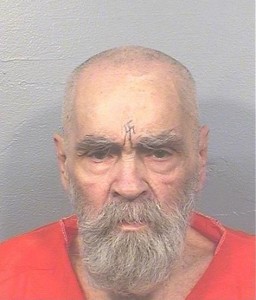
(Photo: California Department of Corrections and Rehabilitation)
Charles Manson finally died last night, at 11:13pm Eastern Time Sunday. I don’t think anyone who is too young to personally remember the 1960s can come close to understanding why his particular brand of evil never quite faded, and why he still received about four fan letters daily until his death.
I believe that the extraordinary resonance of Manson in popular culture is because he was the antithesis of the 1960s, the embodiment of the worst fears of conventional culture about where the countercultural hippie movement could lead: sex, drugs, murders, torture, civil war. He was, to put it simply, the national bogeyman.
It is difficult to convey how unsettled and uncertain things had become at the end of the 1960s, with every institution of society thrown open to question and doubt: hundreds of thousands of protesters at the Democrat National Convention made Chicago look like a war zone, the Army that saved the world from Hitler only 25 years earlier was lying about what it was doing to Vietnam, the naked dishonesty and character flaws of President Nixon would soon destroy him, Russian tanks rolled in to crush the Prague Spring, riots in France forced the president of the republic to seek refuge across the border in Germany. It really seemed that the whole world could come unglued at any time.
Into this seeming chaos, Manson chose the perfect moment to terrify the country with brutal and seemingly inexplicable mass murders. According to lead prosecutor Vincent Bugliosi (who died in 2015) whose book Helter Skelter became the most widely read and well-known account, Manson believed the murders would provoke a race war that would be won by blacks, and because blacks are inferior to whites they would run the country into the ground, leaving it ripe for being taken over by Manson and his followers, waiting it out in secret underground caverns.
Living half his life behind bars before masterminding the multiple murders in 1969 that put him in prison for the rest of his life, Manson had a native intelligence that allowed him to exploit people with utter ruthlessness. He was abandoned repeatedly by his mother as a child, then put into foster care where he was gang-raped by other boys until he became their rapist. From other prison inmates he learned the techniques pimps use to control their prostitutes, employing slight modifications of those techniques to create a cult around himself that he described as a “family.”
At the same time, Manson read books on everything from Eastern mysticism to Scientology, coming to couch his ideology and predictions of race war in apocalyptic religious terms. Such ideas were elsewhere in the air at the time, notably from the 1970 book The Late, Great Planet Earth that first introduced the idea of “Rapture” from fringe Christian discourse. As long as Manson remained alive, he was a living ghost of the 1960s, a provocative and discomforting reminder of just how close chaos, apocalypse, and — for lack of any better term — “Helter Skelter” might really be.


